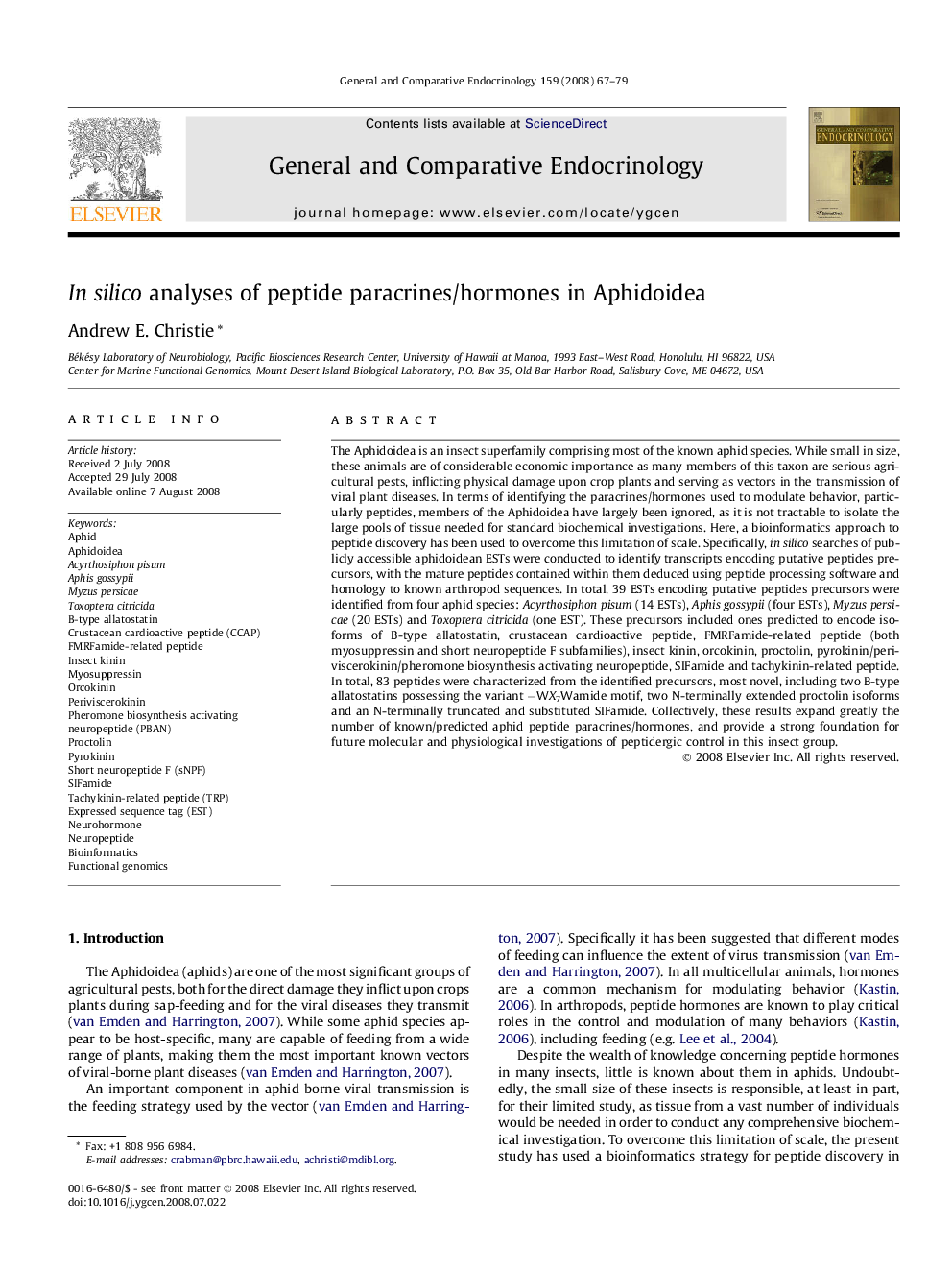| Article ID | Journal | Published Year | Pages | File Type |
|---|---|---|---|---|
| 2801579 | General and Comparative Endocrinology | 2008 | 13 Pages |
The Aphidoidea is an insect superfamily comprising most of the known aphid species. While small in size, these animals are of considerable economic importance as many members of this taxon are serious agricultural pests, inflicting physical damage upon crop plants and serving as vectors in the transmission of viral plant diseases. In terms of identifying the paracrines/hormones used to modulate behavior, particularly peptides, members of the Aphidoidea have largely been ignored, as it is not tractable to isolate the large pools of tissue needed for standard biochemical investigations. Here, a bioinformatics approach to peptide discovery has been used to overcome this limitation of scale. Specifically, in silico searches of publicly accessible aphidoidean ESTs were conducted to identify transcripts encoding putative peptides precursors, with the mature peptides contained within them deduced using peptide processing software and homology to known arthropod sequences. In total, 39 ESTs encoding putative peptides precursors were identified from four aphid species: Acyrthosiphon pisum (14 ESTs), Aphis gossypii (four ESTs), Myzus persicae (20 ESTs) and Toxoptera citricida (one EST). These precursors included ones predicted to encode isoforms of B-type allatostatin, crustacean cardioactive peptide, FMRFamide-related peptide (both myosuppressin and short neuropeptide F subfamilies), insect kinin, orcokinin, proctolin, pyrokinin/periviscerokinin/pheromone biosynthesis activating neuropeptide, SIFamide and tachykinin-related peptide. In total, 83 peptides were characterized from the identified precursors, most novel, including two B-type allatostatins possessing the variant −WX7Wamide motif, two N-terminally extended proctolin isoforms and an N-terminally truncated and substituted SIFamide. Collectively, these results expand greatly the number of known/predicted aphid peptide paracrines/hormones, and provide a strong foundation for future molecular and physiological investigations of peptidergic control in this insect group.
